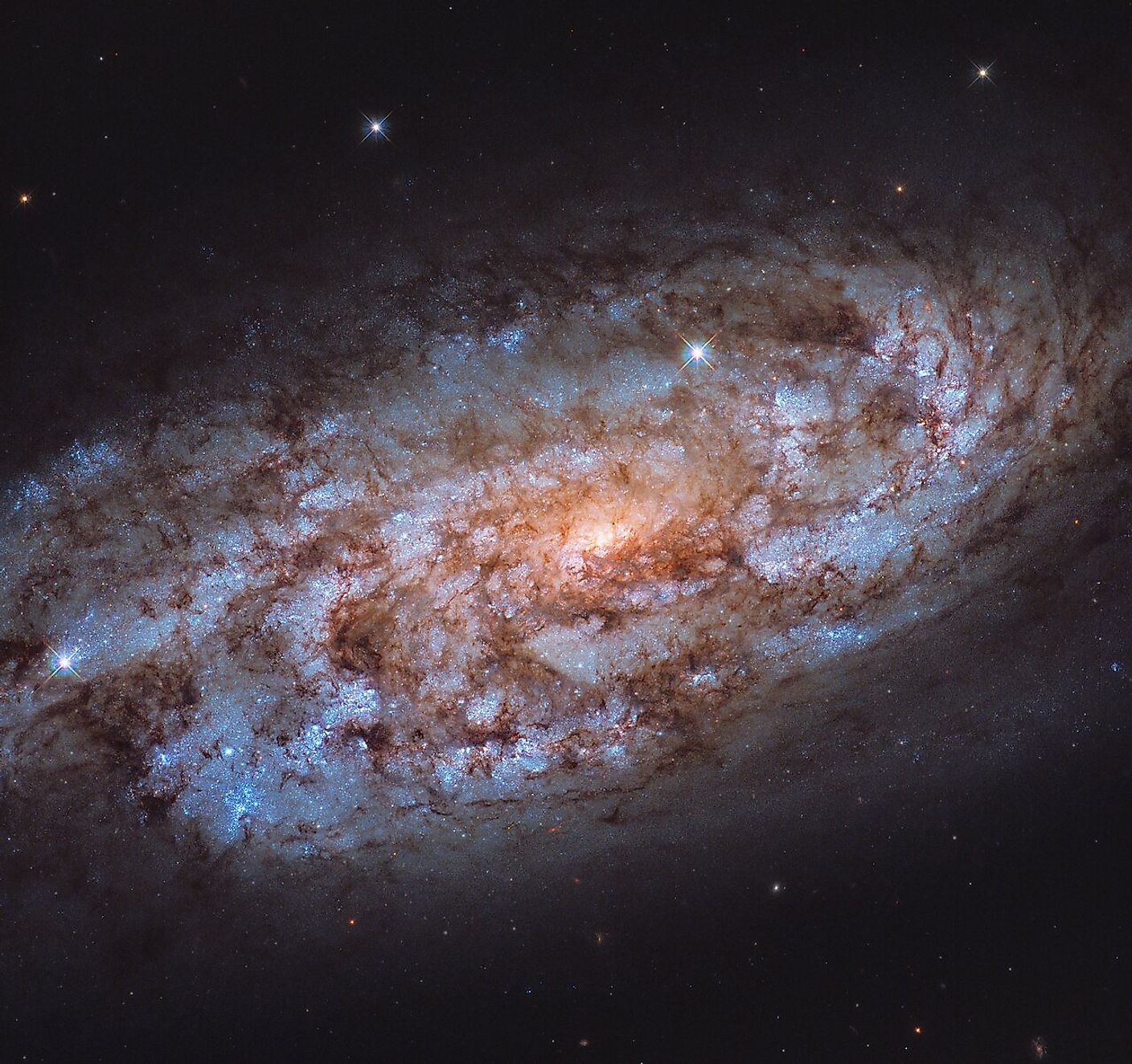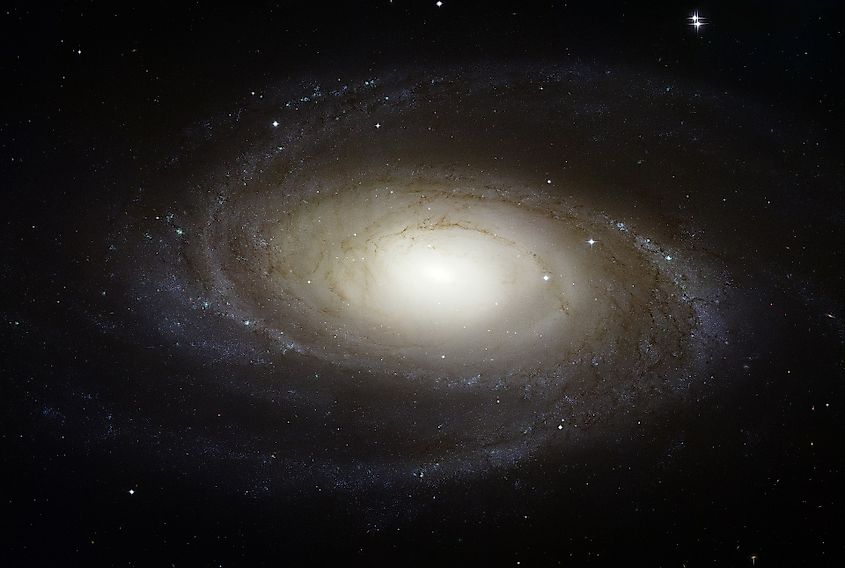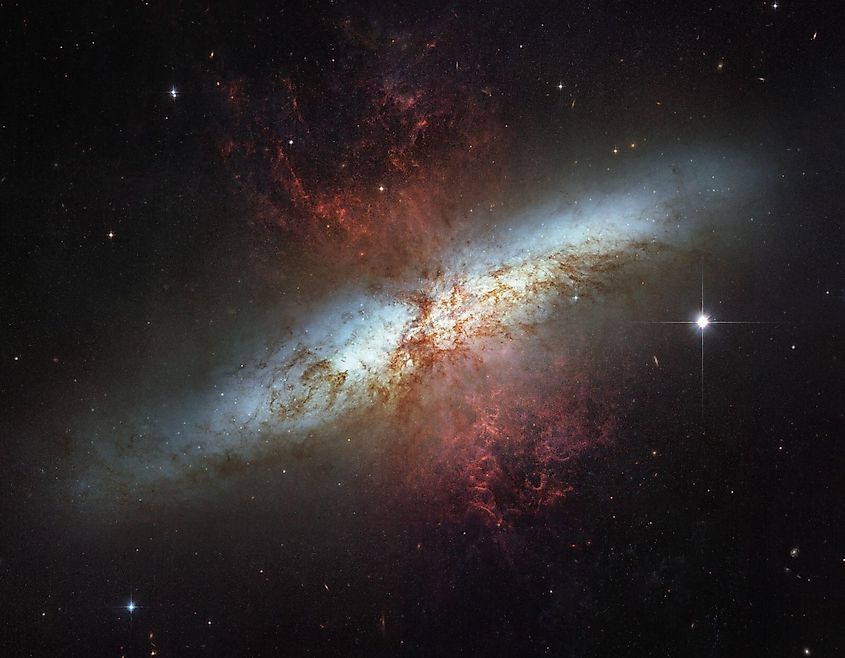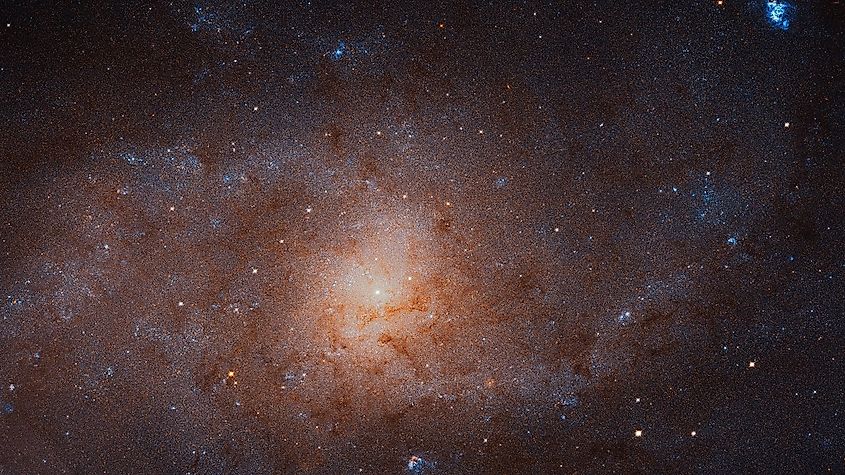
The Five Closest Spiral Galaxies
There are many different types of galaxies. The closest galaxies to Earth are mostly dwarf galaxies and satellites of the Milky Way. Instead of looking at these, we are going to focus on the major spiral galaxies closest to the Milky Way. A galaxy is a collection of billions of stars and gas held together by gravity. The difference between a dwarf galaxy and a regular galaxy is the number of stars and luminosity. Dwarf galaxies can be hard to see as they are a lot dimmer than standard galaxies. The closest dwarf galaxy is the Canis Major Dwarf Galaxy at 25,000 light years from Earth.
5. Bode's Galaxy

Bodes Galaxy, also known as NGC 3031, is 11.74 million light years away from the Earth. This means that it takes 11.74 million years for its light to reach the Earth. During a dark night, this galaxy can be seen through both telescopes and binoculars in the Big Dipper constellation. At the center of this galaxy, there is a supermassive black hole that is 15 times the mass of the supermassive black hole at the center of the Milky Way.
4. Sculptor Galaxy

The Sculptor Galaxy is 11.42 million light years away and is a starburst galaxy. This means that it is currently going through a period of rapid star formation. It is also an intermediate spiral galaxy because it falls in between a barred and unbarred spiral galaxy. Barred and unbarred galaxies are named by a visible bar running through the center of a spiral galaxy. The Sculptor Galaxy is one of the brightest in our sky. It can be seen with binoculars near the star Beta Ceti in the Northern hemisphere.
3. Cigar Galaxy

The Cigar Galaxy is named for the oblong shape we see due to our vantage point on Earth. This galaxy is also a starburst galaxy. However, star formation is happening a lot more rapidly than in the Sculptor Galaxy. As stars are rapidly forming they are creating a galactic wind that pushes gas and dust out of the galaxy. We see this as a red cloud protruding from the center, as this is where the starburst is most concentrated. It is 11.42 million light years away and can be seen with a telescope in the Big Dipper constellation.
2. Triangulum Galaxy

The Triangulum Galaxy is named for the constellation it can be found in. It is the second closest spiral galaxy to Earth at 2.723 million lightyears away. However, it is not nearly as bright as some of the other galaxies on this list and can be hard to see with the naked eye, unless conditions are perfect. Scientists think that the Triangulum Galaxy and the Andromeda Galaxy interacted at some point because of streams of hydrogen and stars linking the two.
1. Andromeda Galaxy

The Andromeda Galaxy is the closest spiral galaxy to Earth, and can be found in its namesake constellation, Andromeda. Even though this galaxy is 2.357 million lightyears away it can be seen with the naked eye on Earth. The spiral arms of this galaxy are being pulled due to the gravitational pull of two neighboring galaxies. It is also moving toward the Milky Way and will eventually collide with our home galaxy in around 4.5 billion years. This collision will create a new galaxy scientists have dubbed the “Milkdromeda Galaxy”.
Galaxy Type and Distance
| Galaxy | Type | Distance |
|---|---|---|
|
Andromeda |
Spiral |
2.357 million lightyears |
|
Triangulum galaxy |
Spiral |
2.723 million lightyears |
|
Cigar galaxy |
Edge-on Spiral |
11.42 million lightyears |
|
Sculptor galaxy |
Intermediate Spiral |
11.42 million lightyears |
|
Bodes galaxy |
Spiral |
11.74 million lightyears |











